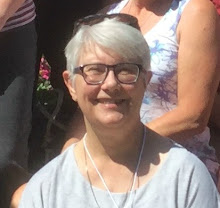
This treadling is more complex than the original and makes an interesting large pattern. The X and O are still there, but elongated. I like creating curves in my fabric and while the raindrops were nice curves, they were a bit static. This pattern is more interesting to my eye. Such ornateness isn't to everyone's taste, though, so I'm only doing 4 of these.
Once again the hem is woven in a point progression.
I like to do hems like this for a couple of reasons. As mentioned yesterday, the draw in is more similar than when using plain weave as a hem for one thing.
For another, when working with rather large patterns that may - or may not - fit into the dimensions I'm aiming for, I can make the hem area longer or shorter to compensate.
For this towel, I increased the repeats in the hem. The next towel, which will have a much simpler treadling, I may decrease the repeats in the hem area.
It is one of the beauties of using weaving software - I can make changes, sometimes quite drastic ones, with very little time invested. I have a library of different treadlings that I can mix and match, or with about 10 to 15 minutes of input, come up with something completely different than what I've used before.
Twills quite fascinate me. I've been weaving various twills almost exclusively for several years, and I don't seem to ever run out of something new to try. :)

































